What’s Better For The Environment – Hardwood, Cork, or Bamboo?
When a lot of homeowners decide to upgrade their interiors, the first place they start is with the flooring. After all, it’s one of the easiest ways to make a big impact in your home.
Here in Colorado, hardwood remains ever-popular. It’s where many homeowners start, especially for the main living spaces inside the family home. But if you have the desire to improve the sustainability of the materials you choose, and to reduce your carbon footprint, you start paying attention to the material and how it’s sourced. You love hardwood, but is it your best choice?
That may just give you a push to look at other sustainable products. You’ll find both bamboo and cork have many of the same qualities as hardwood, yet either can give you even more environmentally friendly aspects you’ll love bringing into your home.
Which should you consider? Start by understanding the pros and cons that each offers to your home.
What does environmentally friendly mean?
Before we get into what material is the most environmentally friendly for use in your home, it’s important to have a greater understanding of what it means to be environmentally friendly.
To live eco-friendly means to focus on preventing as much harm to the environment as you can through your daily intentions. It means selecting eco-friendly products that promote green living and prevent air, water, and noise pollution. They don’t drain the resources in the environment, while at the same time prevent human health deterioration.
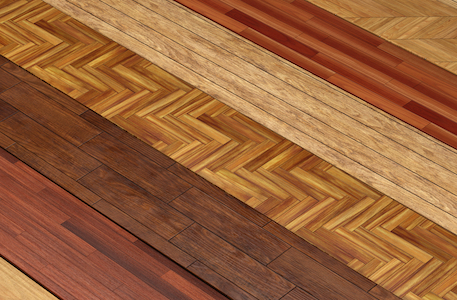 To build a life around eco-friendly choices, it takes time to learn what’s out there, discover how it impacts the carbon footprint you create through your daily life, and support others who are also working to reduce emissions and create a more sustainable lifestyle.
To build a life around eco-friendly choices, it takes time to learn what’s out there, discover how it impacts the carbon footprint you create through your daily life, and support others who are also working to reduce emissions and create a more sustainable lifestyle.
The reason the three materials mentioned here – hardwood, bamboo, and cork – are closely associated with eco-friendly living is because of how they are produced as well as their popularity in the marketplace.
Bamboo and sustainability
One of the reasons bamboo has grown in popularity is its ability to mimic the looks of hardwood. It’s available in a wide array of colors and patterns. Leave it in its natural state to bring out aesthetically pleasing qualities. Or look for a broader range of options to match any design preferences.
One of the things that attracts people to bamboo is its sustainability. Bamboo isn’t actually a hardwood, and isn’t a product made from trees. Instead, it’s created from a rapidly growing grass that rejuvenated itself regularly from rhizome stock. It can be harvested annually once the plant reaches full maturity, which can occur within five to seven years.
If bamboo is well managed, it grows rapidly in areas that require little work to create a dynamic stock. It requires neither pesticides nor fertilizers to grow, and works to prevent runoff into rivers and lakes. It’s important to check out the supplier carefully, to ensure the manufacturer is sourcing the product from well managed resources. This ensures they care about the material they are selecting, the process used in manufacturing, as well as creating the best product for your home.
If you select wisely, bamboo will be just as durable as other hardwood options. Bamboo can be as hard as red oak, and offer moisture-resistance that makes it a great choice for many rooms in your home. Care for it well, and it can easily give you 20 to 25 years of life or more.
Cork and sustainability
What do you think of when someone mentions cork? For many, it brings up wine bottles and bulletin boards they may have used in school. But cork flooring doesn’t resemble either of those. Instead, it’s a different flooring alternative with a lot of benefits you’ll find in other choices, such as hardwood or bamboo.
Cork flooring is sourced from the cork tree that is native and abundant in Portugal. Instead of chopping down the tree to use the internal wood, cork is taken from the tree’s bark, ground up, and processed into large sheets. It’s then baked in a kiln to achieve hardness, and brought into homes or commercial buildings for use.
Like bamboo, cork isn’t a “once only” product. Instead, cork can be harvested once every nine years from mature trees over 25 years old. When you remove the bark, it doesn’t harm the tree; it simply grows back. That means you can continually harvest it for years to come without destroying the crop.
Cork flooring has been used for hundreds of years and is found in homes throughout time. It’s both a sustainable and renewable resource that captures large amounts of carbon dioxide. If well cared for, cork can last for decades, meaning you won’t have to replace it multiple times as you update your home.
Hardwood and sustainability
Hardwood has been a popular flooring choice, and continues to be one of the most in-demand on the market today. But is it sustainable?
Wood is a renewable resource if you select from a manufacturer that focuses on sustainable practices. Like other crops, wood can be harvested without damaging the environment if its carefully managed with sustainability in mind. Hardwood growers realize that it can take a tree up to 60 years to mature, so they manage their resources by planting more trees than they harvest. That ensures a growth rate that can always step up to date with demand. You can use the American Hardwood Export Council’s interactive map to learn more about the types and locations of where wood is harvested from.
Being environmentally friendly isn’t just about where the product is sourced from. It’s also about lifespan. If a product lasts for 60 years, it can be more environmentally friendly than one that needs changing out every 20.
It also depends on recyclability. Can the product be used again after removal? Can it be recycled into something else, without being deposed into the landfills?
Hardwood is a product that can continue to be used again and again, for projects like furniture, decorative features, or even accent walls.
What’s your preference?
What’s the best choice for environmentally friendly living – hardwood, bamboo, or cork? They each have their own unique characteristics that make them a great addition to any family home.
What’s your preference?
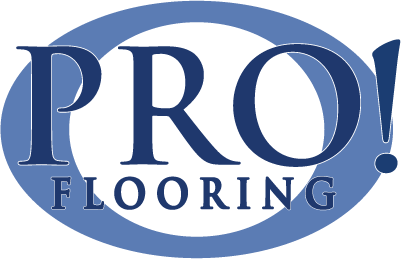
 Aging in place is about ensuring you have the products and materials in place to ensure transitions. Focus on:
Aging in place is about ensuring you have the products and materials in place to ensure transitions. Focus on: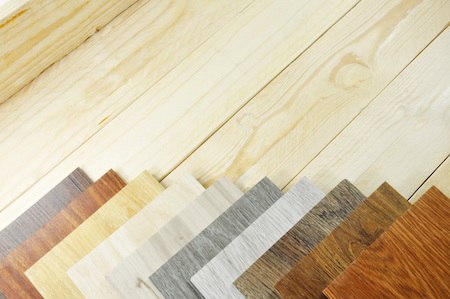 Sustainable – this is one of the top reasons people are moving towards natural flooring: it’s sustainable and not as taxing on the environment. The materials can be extracted from nature without harming the world we live in. Not only is the material from a renewable resource, but it’s also readily biodegradable and can be recycled or returned to nature without harming the earth.
Sustainable – this is one of the top reasons people are moving towards natural flooring: it’s sustainable and not as taxing on the environment. The materials can be extracted from nature without harming the world we live in. Not only is the material from a renewable resource, but it’s also readily biodegradable and can be recycled or returned to nature without harming the earth. Still think your flooring doesn’t matter?
Still think your flooring doesn’t matter?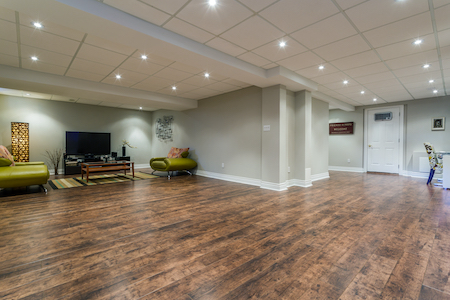 If you start looking around at wood flooring, you’ll see certain types over and over again. Oak, birch, pine, these species of wood are ever-popular because they do well as flooring. They look good, they are easy to maintain, and they are easy to grow and harvest to turn into building materials. That also is what gives them affordability.
If you start looking around at wood flooring, you’ll see certain types over and over again. Oak, birch, pine, these species of wood are ever-popular because they do well as flooring. They look good, they are easy to maintain, and they are easy to grow and harvest to turn into building materials. That also is what gives them affordability.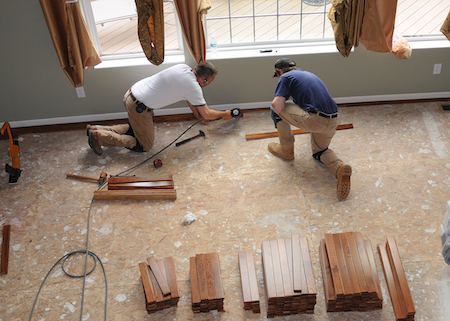 Before you make your final selection, talk with a flooring expert. They can help you understand what flooring material will work best in your unique situation.
Before you make your final selection, talk with a flooring expert. They can help you understand what flooring material will work best in your unique situation.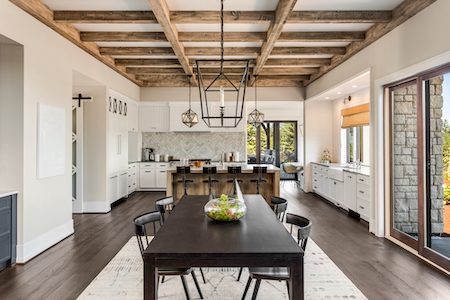 If you shop for hardwood and have your eye on pine, fir, or cedar, all of which are popular throughout North America, you’re looking at a softwood flooring product. These all make excellent flooring products because they tend to grow and mature faster than other species of trees. That makes the wood abundantly available, and easier to farm and harvest than other choices. Because of their abundance, you’ll never have to worry about locating sustainable or eco-friendly products.
If you shop for hardwood and have your eye on pine, fir, or cedar, all of which are popular throughout North America, you’re looking at a softwood flooring product. These all make excellent flooring products because they tend to grow and mature faster than other species of trees. That makes the wood abundantly available, and easier to farm and harvest than other choices. Because of their abundance, you’ll never have to worry about locating sustainable or eco-friendly products.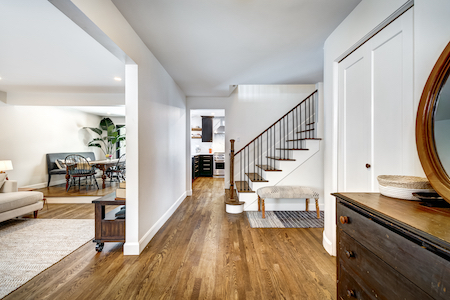 Speaking of asking questions, we can’t recommend this enough. Before you start the process, create a list of questions that apply directly to your project. Keep adding to it. Then bring it with you when you start looking for flooring.
Speaking of asking questions, we can’t recommend this enough. Before you start the process, create a list of questions that apply directly to your project. Keep adding to it. Then bring it with you when you start looking for flooring.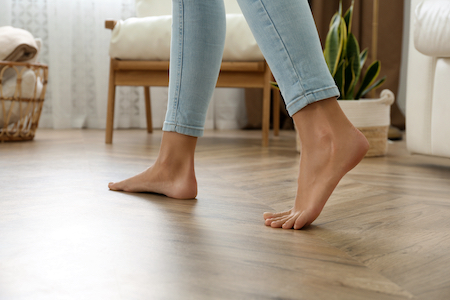 Suddenly, the temperature spikes to well over 100 degrees. Or maybe it plunges to 10 below, with wind chill moving well past that. So you run the air conditioner or furnace more. A lot more. That can change both the temperature and humidity levels inside your home. In the peak of winter, your floor will naturally be drier. More dry air circulating through your home means drying out would, which creates shrinkage and
Suddenly, the temperature spikes to well over 100 degrees. Or maybe it plunges to 10 below, with wind chill moving well past that. So you run the air conditioner or furnace more. A lot more. That can change both the temperature and humidity levels inside your home. In the peak of winter, your floor will naturally be drier. More dry air circulating through your home means drying out would, which creates shrinkage and 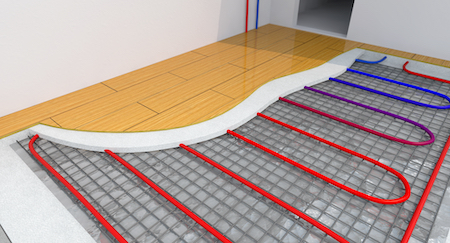 Heat rises. It only makes sense to get your heating source as close to the ground as possible to keep your home warm and comfortable. You can’t get much closer to the ground than with radiant heating. But there’s more to it than that.
Heat rises. It only makes sense to get your heating source as close to the ground as possible to keep your home warm and comfortable. You can’t get much closer to the ground than with radiant heating. But there’s more to it than that.